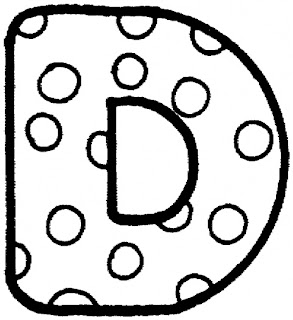Hepatitis disease
-An inflammation of the liver, typically caused by a viral infection. There are five main hepatitis virus, they are type A, B, C, D and E. These five types are of greatest concern because great ordeal brought about by this illness, which can lead to death, and can potentially cause outbreaks and epidemia. Types B and C particularly leads to chronic disease in people and both are the most common cause of liver cancer and cirrhosis.
Hepatitis A
→ The least serious and mildest in all types of hepatitis disease, It does not become chronic. Hepatitis A is acquired through consuming contaminated food or water, sharing contaminated utensils, and sexual contact with an infected person.
Symptoms usually show up 2-6 weeks from exposure. Some of which include the following:
• Dark urine
• Fatigue
• Itching
• Loss of appetite
• Low grade fever
• Nausea and vomiting
• Pale or clay-colored stools
• Yellow skin(jaundice)
PREVENTION: Hygiene, Hepatitis A -Vaccine
There is no found specific treatment for hepatitis A. Patients are recommended to have rest and avoid alcoholic beverages so as not to toxify the liver hence, fast recovery.
HEPATITIS B
→ Irritation and swelling (inflammation) of the liver; it is 50 to 100 times more infectious than HIV.
This type of infection can be transmitted through having contact with the blood, semen, vaginal fluids, and other body fluids of someone who is already infected. A Hepa B vaccine that is 95% effective has already been made available since 1982.
• Hepatitis B virus can also cause chronic liver infection, which can later develop into cirrhosis or liver cancer if left untreated.
Symptoms
• Yellowing of the skin and eyes (jaundice)
• Dark urine
• Extreme fatigue
• Nausea and vomitting
• Abdominal pain
Transmission
• From mother to baby
• Unsafe injection practices
• Blood transfusions
• Sexual contact
Note that,
• Hepatitis B is not spread through contaminated food or water, and is not casually spread in the workplace
• Chronic Hepatitis B can be treated with drugs, including interferon and anti viral agents, which can help some patients.
HIGH RISK GROUPS
• Person with high-risk sexual behaviour
• Partners and household contacts of HBV infected person
• Injecting drug users
• Persons who frequently require blood or blood products
• Recipients of solid organ transplantation
• Health care workers
• International travellers to countries with high rates of HBV.
The best way to prevent Hepatitis B Virus is through vaccination.
HEPATITIS C
Hepatitis C is a contagious liver disease that ranges in severity from a mild illness lasting a few weeks to a serious, lifelong illness that attacks the liver.
Transmission → Blood to blood
Hepatitis C can be either “acute” or “chronic.”
Acute Hepatitis C - Infection is a short-term illness that occurs within the first 6 months after someone is exposed to the Hepatitis C virus. For most people, acute infection leads to chronic infection.
Chronic Hepatitis C -Infection is a long-term illness that occurs when the Hepatitis C virus remains in a person’s body. Hepatitis C virus infection can last a lifetime and lead to serious liver problems, including cirrhosis (scarring of the liver) or liver cancer.
Hepatitis C is similar to Hepatitis B; however, it is "weaker" in terms of transmission compared to HBV.
HEPATITIS D
It is "co-infection" of hepatitis B and D
Co-infection occurs when both HDV and HBV are contracted simultaneously. This results in acute HDV and HBV infection. Depending on the relative amounts of HBV and HDV, one or two episodes of hepatitis occurs. Co-infections of HDV and HBV are usually acute and self-limiting infections. HBV/HDV co-infections cause chronic HDV infections in less than 5% of co-infected patients. Although clinical symptoms disappear, fatigue and lethargy may persist for weeks or months.
• HDV is typically more severe than that of the other hepatitis viruses
• Shows typical symptoms of hepatitis disease
• NO vaccine for HDV, but there is for Hepatitis B
• Blood to blood transmission
HEPATITIS E
Hepatitis E is a waterborne disease which is transmitted via faecal-oral route. It is commonly found in contaminated water or food supplies which have been implicated in major outbreaks. It is similar to Hepatitis A in terms of acquirement but this type is this is stronger and pointed out to be an epidemic type of Hepatitis.
• Signs and symptoms are similar to all other types.
Transmission
•Eating or drinking contaminated food or water. Most outbreaks in developing countries have been associated with contaminated drinking water. Vegetables, salads, shellfish, and iced drinks are commonly implicated in outbreaks.
• Sharing contaminated utensils
• Touching contaminated surfaces and then placing your hands near or in the mouth.
• Sexual contact with an infected person (uncommon).
•Household contact with an infected person (uncommon).
Hepatitis disease is one those viral infection that needs to be treated early as it is a "health threat" to the people surrounding the infected person. It is highly recommended to be vaccinated with anti hepatitis disease to avoid infections which can lead to complications like cirrhosis or liver cancer, alongside should be the proper practice of personal hygiene.










